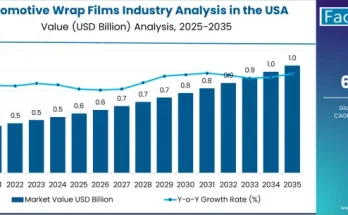As global supply chains evolve and transportation demands intensify, the need for more efficient, safer, and technologically advanced logistics solutions is pushing the rise of automated trucks. These self-driving vehicles are revolutionizing freight mobility by leveraging artificial intelligence, sensor technologies, and advanced software to reduce human dependency and optimize performance.
The automated truck market is gaining traction across regions as logistics providers, OEMs, and tech companies invest in autonomous driving systems. The surge in demand for safer roads, lower operational costs, and reduced driver fatigue is steering the trucking industry toward automation. As the industry advances, the development of high-level autonomous trucks will play a pivotal role in shaping the future of freight transport.
Market Overview:
Automated trucks are equipped with autonomous driving systems that range from driver-assist features to full autonomy. These trucks utilize a combination of radar, lidar, cameras, GPS, and AI-powered software to perceive their surroundings, make decisions, and navigate roads with little or no human intervention.
The adoption of automated trucks is transforming traditional fleet operations by enhancing efficiency, safety, and long-distance hauling capabilities. While the full-scale deployment of Level 5 autonomy is still under development, incremental automation—such as platooning and highway autopilot—is already making inroads in commercial transportation.
Market players are focusing on integrating automated systems with logistics platforms to streamline cargo delivery, minimize downtime, and reduce fuel consumption. These developments are shaping a new era in logistics marked by technological innovation and sustainability.
Key Drivers:
- Safety and Accident Reduction
One of the core motivations for adopting automated trucks is to enhance road safety. Automation reduces the risks associated with driver fatigue, human error, and distracted driving—major causes of accidents in long-haul freight transport.
- Fuel Efficiency and Cost Optimization
Automated driving systems help maintain consistent speeds, minimize idling, and improve fuel economy. This contributes to significant cost savings for fleet operators, making autonomous trucks an attractive long-term investment.
- Driver Shortage
The trucking industry is grappling with a shortage of skilled drivers, especially in long-distance operations. Automated trucks can help fill this gap by handling repetitive highway driving tasks and reducing reliance on human drivers.
- Technological Advancements
Continuous improvements in sensor technology, machine learning algorithms, and vehicle-to-everything (V2X) communication systems are accelerating the development and deployment of automated trucks.
- Environmental Regulations
Governments worldwide are implementing strict emission norms. Autonomous trucks are often designed with fuel-efficient powertrains and optimized routes, contributing to lower emissions and better compliance with environmental policies.
Regional Insights:
North America
North America remains at the forefront of the automated truck revolution, with major logistics and automotive companies actively testing and deploying autonomous freight vehicles. Supportive infrastructure, regulatory initiatives, and high investment in autonomous technology are accelerating market penetration in the region.
Europe
Europe follows closely, driven by its push toward digital transformation and smart mobility. The region’s stringent emission regulations and investments in connected transport infrastructure are supporting the growth of automated trucking systems.
Asia-Pacific
Asia-Pacific is emerging as a significant growth hub for automated trucks. Countries like China, Japan, and South Korea are investing in autonomous vehicle R&D and road infrastructure upgrades. The region’s growing logistics industry and adoption of smart technologies further support market expansion.
Latin America and Middle East & Africa
While adoption is still at an early stage, increasing interest from logistics firms and government pilot programs is likely to drive future growth in these regions. Key opportunities lie in long-haul applications across sparsely populated regions with simpler driving conditions.
Key Trends & Forecast:
The automated truck market is undergoing rapid technological evolution, influenced by several key trends:
- Platooning and Semi-Autonomous Features
Platooning, where a lead truck is followed by a convoy of automated trucks, is gaining traction as an intermediate step toward full automation. This technique improves fuel efficiency, reduces drag, and enhances road capacity utilization.
- Partnerships Between Tech and Auto Companies
Collaboration between traditional truck manufacturers and tech companies is accelerating product development. These alliances combine domain expertise in hardware and advanced software to fast-track autonomous driving solutions.
- Rise of AI and Machine Learning Integration
AI plays a central role in decision-making for autonomous trucks, enabling them to process real-time data from multiple sources, learn from patterns, and optimize routes. Enhanced AI models are expected to further increase safety and reliability.
- Regulatory Framework Development
Governments and regulatory bodies are working to create standards and guidelines for autonomous vehicle testing and operation. A clear and consistent regulatory environment is crucial for scaling automated truck deployment.
- Deployment in Controlled Environments
Early adoption is often seen in controlled environments such as mines, ports, and industrial zones. These low-complexity use cases serve as testbeds for future public road operations.
Applications & End-Use Outlook:
Automated trucks offer immense potential across various logistics and industrial sectors. Key applications include:
- Long-Haul Freight Transport
Highway automation is the most promising application for automated trucks. Long-haul routes typically involve consistent speeds and predictable road conditions, making them ideal for autonomous driving technologies.
- Distribution and Logistics
Automated trucks are being integrated into last-mile and mid-mile logistics networks to improve delivery efficiency, especially in distribution hubs and automated warehouses.
- Mining and Construction
In off-highway and industrial applications, autonomous trucks are used to transport heavy materials with minimal human intervention. These environments benefit from structured routes and repeatable tasks.
- Ports and Intermodal Yards
Autonomous trucks are increasingly used in ports and freight terminals for container handling and short-distance hauling. Automation here helps streamline operations and reduce labor costs.
- Military and Defense
The defense sector is exploring unmanned freight systems for transporting supplies and equipment in hazardous zones. The reduced risk to human drivers and enhanced operational efficiency makes automation valuable in this domain.
Competitive Landscape:
The automated truck market is characterized by robust innovation and strategic alliances among automotive OEMs, autonomous tech providers, and logistics firms. Key trends shaping the competitive landscape include:
- Pilot Testing and Road Trials: Leading players are conducting extensive pilot programs to validate performance, safety, and real-world viability.
- Scalable Platforms: Development of modular, scalable automated platforms allows manufacturers to adapt systems across various truck classes.
- Software-as-a-Service (SaaS) Models: Several companies are offering autonomous driving capabilities as a subscription service, allowing fleet operators to adopt technology without heavy upfront costs.
- Focus on Cybersecurity: As connected systems become the norm, protecting autonomous trucks from cyber threats is becoming a priority for developers and fleet managers.
Collaboration, rapid R&D, and agile deployment strategies are key factors that will determine market leadership in the years ahead.
Future Outlook:
The future of freight transport is undeniably automated. As technology matures and infrastructure adapts, automated trucks are expected to become a mainstream element of logistics operations. The market is poised for expansion across a variety of use cases, from highway convoys to industrial logistics.
However, widespread adoption will depend on:
- Regulatory Harmonization: A globally aligned legal framework will accelerate deployment and interoperability across borders.
- Public Perception and Trust: Building confidence in autonomous systems through transparency, safety records, and communication is vital.
- Cost and ROI Clarity: Demonstrating tangible benefits in terms of fuel savings, reduced accidents, and lower maintenance costs will be crucial for mass adoption.
- Workforce Transition: Industry stakeholders will need to manage the shift in workforce dynamics, reskilling drivers and technicians for new roles in automated logistics.
With these enablers in place, the automated truck market will not only reshape logistics but also contribute to broader goals around sustainability, safety, and digital transformation.
Conclusion:
Automated trucks represent the next frontier in freight transportation—one that promises to redefine logistics efficiency, safety standards, and cost-effectiveness. As technology continues to evolve and regulatory frameworks mature, the commercial adoption of autonomous freight vehicles will scale rapidly.
Fleet operators, technology developers, and logistics providers must stay ahead of the curve by investing in automation, fostering partnerships, and aligning with policy advancements. With the right strategy, automated trucking will become a cornerstone of future-ready logistics systems, delivering value across the entire supply chain.



